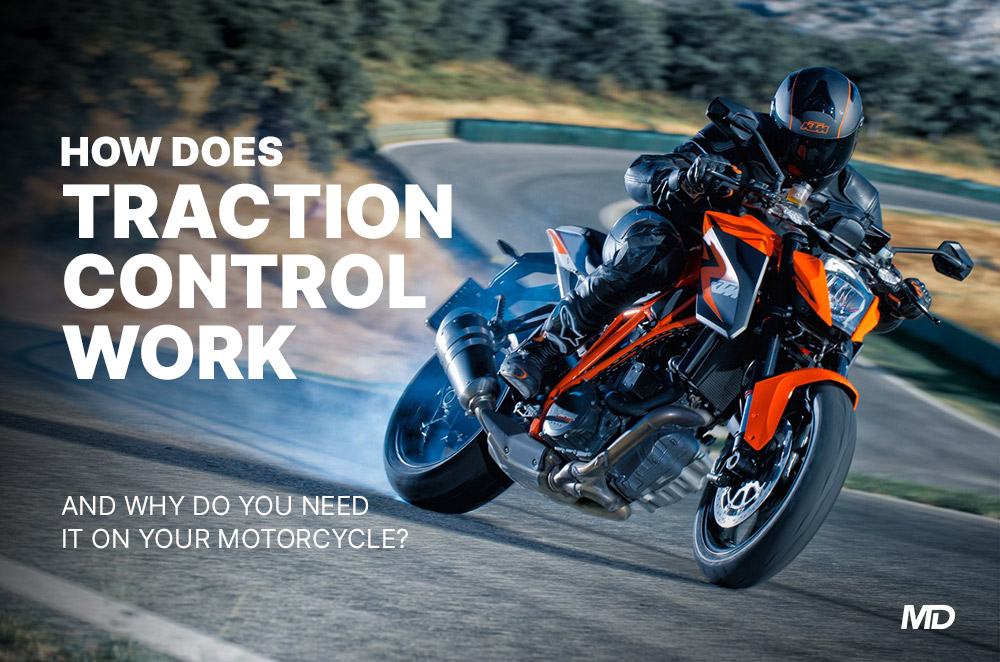How does traction control work and why do you need it on your motorcycle?
A safety net that will catch you before you fall.

Traction control, especially in larger-displacement motorcycles is an extremely important system especially since quite a few of us don’t quite have the reflexes of a MotoGP racer. It goes without saying, but motorcycling can get quite dangerous especially at faster speeds.
Considering that the contact patch on a motorcycle’s tire can be around the same size as a credit card, you need to carefully consider and manage your tires’ grip whenever you’re on a bike. Manufacturers equip more powerful motorcycles with a traction control system that doesn’t allow for the rear wheel or front wheel to slip, helping you avoid an accident on the road.
Traction control systems may be found on higher-displacement sportbikes or nakeds, usually in the 650cc or middleweight category. However, there are still motorcycles in this class like the Yamaha MT-07 with no traction control. As such, some manufacturers may require customers to buy up a little more displacement for this feature. However, more modern platforms like the Triumph Trident 660 comes standard with traction control compared to some of its Japanese rivals.
How does traction control work?

The system is usually built into the engine control unit (ECU) of a motorcycle. For more advanced bikes, these ECUs will come with a set of sensors that allow the motorcycle to tell where it is and what is it doing, whether leaning, braking, or going full-throttle.
With the system in place, the ECU can interrupt the power going to the rear wheel should it find a rider’s input, or road conditions to be dangerous. The traction control system cuts the power momentarily to allow the bike’s rear to regain traction in a manageable way by using the fuel supply system or via a motorcycle’s ride-by-wire system if it is equipped as such.
Why do you need traction control?

The vast majority of riders will not be in ideal conditions all the time. Variances like ambient temperature, road conditions, tire wear, or even rider mood may affect a bike’s ability to hold traction.
Without traction control, a bike may drift, wheelie, or even do a burnout. If these words seem scary to you, you’ll be glad to keep traction control on. Some motorcycles have riding modes that allow riders to experience different levels of traction control. Some bikes don’t come with the feature at all and can be dangerous without proper throttle control.
To summarize, traction control will keep your rear from slipping and prevent a high or low-side crash. It’ll also save you from losing the rear while you are riding a little spiritedly or if road conditions are taking a turn for the worse. Either way, the best safety system is still proper training and riding habits, but think of traction control as a safety net. It’s nice to have just in case.
Related Articles
-
Motorcycle 101: The inner workings of a slipper clutch / Featured Article
Slipper clutches are awesome as they make for more forgiving downshifts and a lighter clutch lever. Let’s take a closer look at them and see how they work.
-
5 things to remember when shopping for new motorcycle tires / Featured Article
Here are 5 things to consider when time comes for you to replace the tires on your motorcycle.
-
Can't ride your motorcycle because it's raining? Do these 4 things instead / Featured Article
Here’s a quick listicle of activities you can do if you can’t ride your motorcycle because of bad weather.
-
Which motorcycle jacket should you buy for your riding style? / Featured Article
There are a multitude of options when it comes to riding jackets. Let’s take a closer look at some of the most popular types.
-
Here are some serious up and coming innovative motorcycle tech features / Featured Article
The motorcycle world is full of new and innovative technology. Here are a few tech features we can expect to see more of in the near future.
Latest Features
-
Last-minute Christmas gift ideas for your rider friends and family / Featured Article
Struggling to think of gift ideas for your motorcyclist friends and family? Read on to get some inspiration this gift-giving season.
-
Ride a naked sportbike? Get these 5 upgrades first / Featured Article
Here’s a quick list of 5 upgrades to your naked sportbike to enhance your riding experience.
-
Motorcycle 101: The inner workings of a slipper clutch / Featured Article
Slipper clutches are awesome as they make for more forgiving downshifts and a lighter clutch lever. Let’s take a closer look at them and see how they work.








